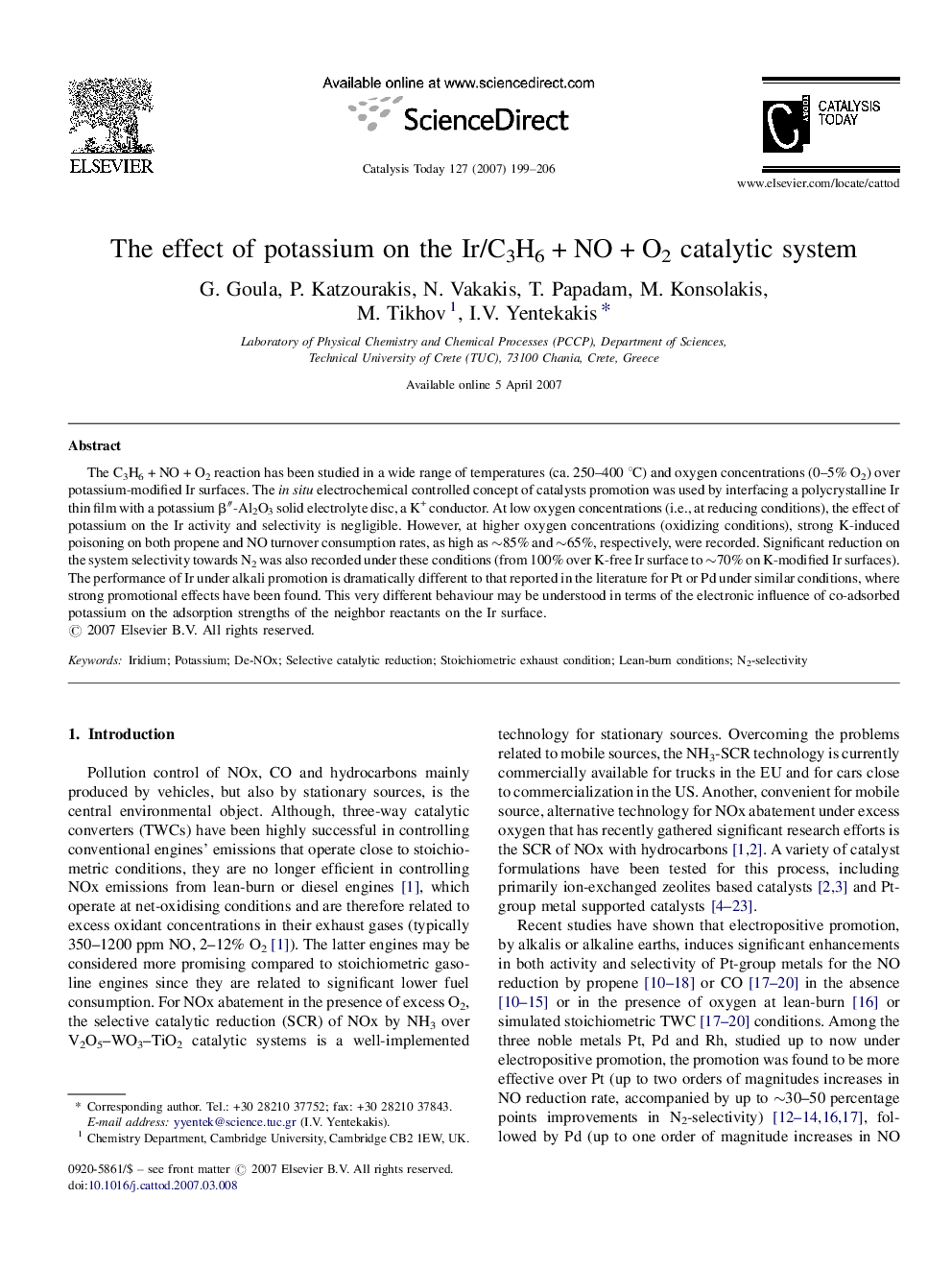| Article ID | Journal | Published Year | Pages | File Type |
|---|---|---|---|---|
| 58493 | Catalysis Today | 2007 | 8 Pages |
The C3H6 + NO + O2 reaction has been studied in a wide range of temperatures (ca. 250–400 °C) and oxygen concentrations (0–5% O2) over potassium-modified Ir surfaces. The in situ electrochemical controlled concept of catalysts promotion was used by interfacing a polycrystalline Ir thin film with a potassium β″-Al2O3 solid electrolyte disc, a K+ conductor. At low oxygen concentrations (i.e., at reducing conditions), the effect of potassium on the Ir activity and selectivity is negligible. However, at higher oxygen concentrations (oxidizing conditions), strong K-induced poisoning on both propene and NO turnover consumption rates, as high as ∼85% and ∼65%, respectively, were recorded. Significant reduction on the system selectivity towards N2 was also recorded under these conditions (from 100% over K-free Ir surface to ∼70% on K-modified Ir surfaces). The performance of Ir under alkali promotion is dramatically different to that reported in the literature for Pt or Pd under similar conditions, where strong promotional effects have been found. This very different behaviour may be understood in terms of the electronic influence of co-adsorbed potassium on the adsorption strengths of the neighbor reactants on the Ir surface.
